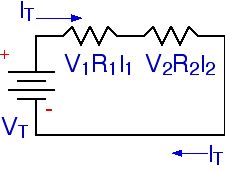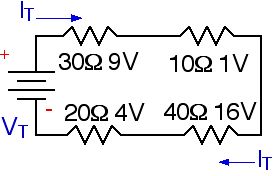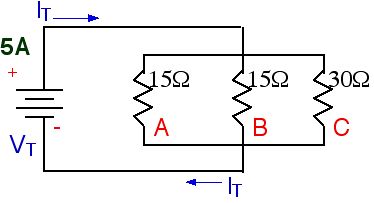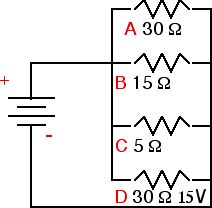
Series circuits
The total voltage is the sum of the voltage on each component.
eq 1: V T= V 1+ V 2+ V 3+... Vn
(In this case, V T= V 1+ V 2)
The total resistance is equal to the sum of the resistance on each c

omponent.
eq 2: R T= R 1+ R 2+ R 3+...+ R n
(In this case, R T= R 1+ R 2)
The total current is equal in every component.
eq 3: I T= I 1= I 2= I 3= I 4=...= I n
(In this case, I T= I 1= I 2)
Consider this circuit:
What is the total voltage, resistance and current?
Use equation #1 to find total voltage, equation #2 to find total resistance, and Ohm’s law to find the current, which will be the same through each d

evice.

mponent.
eq 5: 1/R T= 1/R 1+ 1/R 2+...+ 1/R n
(In this case, 1/R T= 1/R 1+ 1/R 2)
The total current is equal to the sum of current in each component. The current through each component is dependent on it’s resistance, and must be calculated with Ohm’s law.
eq 6: I T= I 1+ I 2+ I 3+ I 4+...+ I n
(In this case, I T= I 1+ I 2)
What is the total voltage, resistance and current through this circuit:
What is the voltage and current through each component?
Use eq. 5 to get total resistance first.


